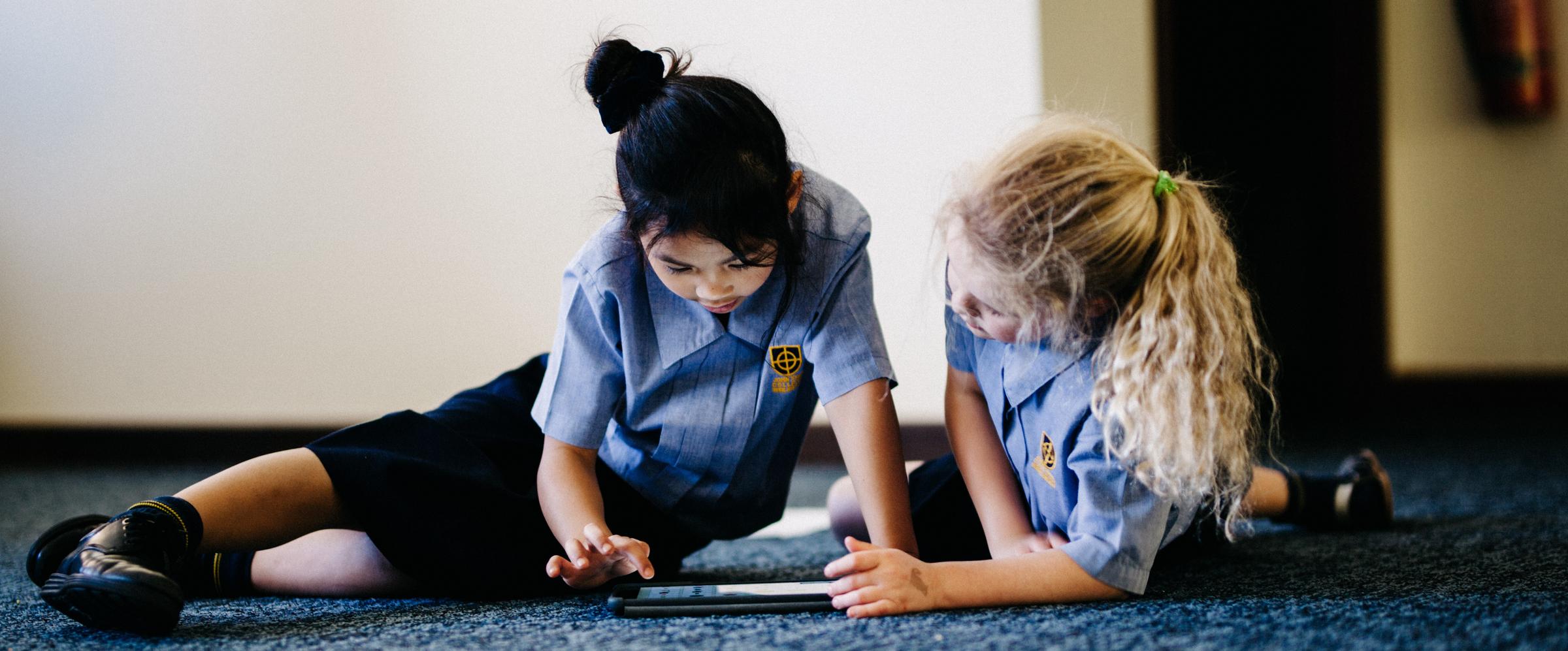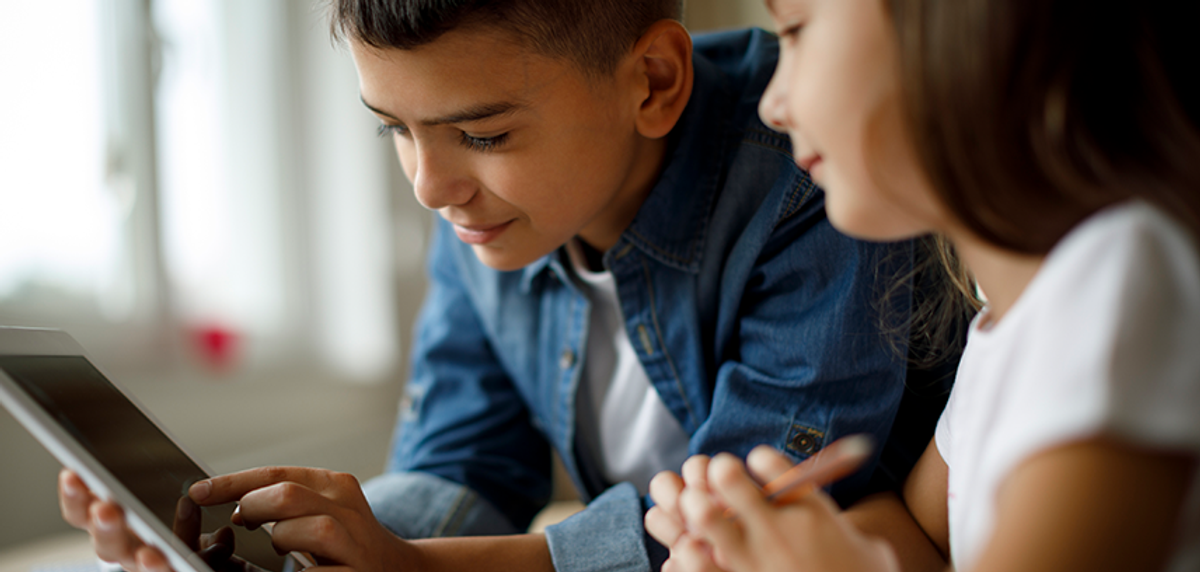Cyber Safety

Cyber Safety Hub
The Hub includes expert advice on the most pertinent cyber safety issues and frequently asked questions around platforms like TikTok, Fortnite, Instagram, and more. There are app reviews with age and safety recommendations, a range of guides and resources to help ensure healthy boundaries around screen time and gaming, and step-by-step instructions for using parental controls and filtering out inappropriate content.
How to get Help with Qustodio as a Parent
This video provides parents with a practical guide for how they can get help with their Qustodio Parent tools.
5 tips to help balance screen time and learning
While devices have become an indispensable tool for parents, teachers and children alike, it’s hard to shake off the creeping sensation that it’s becoming more and more difficult to manage time in front of screens, whether it’s educational or not.
Excessive screen time doesn’t just affect children: the whole family can benefit from screen-time management strategies, helping create a balance between work and life, and the technology we use in both situations. So how can you make it work?
Try these tips to help balance screen time and learning, designed to help your family develop healthy digital habits and make the most of technology together.
1. Determine when, where and how screens are used
Creating a screen time routine based on your child’s age can be a useful tool for parents, while also helping children understand their own digital limits. When developing your family’s screen time routine, consider the times your children can use technology, the places they are able to access screens, and what they are able to use devices for. If you want to avoid setting timers and constant clock checking for when your kids can access certain devices, you may want to use a parental control tool to help set screen-free times of day – this way you can program a schedule ahead of time, and concentrate on your family moments!
For example, if your child has a device they have been given by the school, such as a Chromebook, make it clear they cannot use that device for personal use – no social media, no video streaming, and no web browsing that doesn’t directly relate to schoolwork. Likewise, if they have a personal device such as a cell phone, encourage them not to use it for school work.
By helping them to separate their personal devices from their school devices, you’ll contribute to the lines not becoming blurred between usage for school life and home life. It also helps to consider where you and your kids can access your various devices. Maybe you would prefer video games to be played in common areas, while schoolwork can be done in the study, or at a desk in an allocated room. These rules can also help you as parents to keep work and home life separate, if you use a work device!
2. Be selective about TV and video content
Many of us love to learn new things through TV programs and YouTube, and video content can certainly be a useful tool when it comes to digesting information and exploring new topics. But how much of the content uploaded to “educational” YouTube channels is really oriented to learning? While education has its very own category on the platform, regulation of the individual videos is difficult, which means much of the content under the category is not particularly educational in nature, and in some cases, the information detailed in them could be inaccurate.
Some things you can do to help your children engage with more relevant TV series and better online video content include:
- Turn off the autoplay feature on YouTube. The videos suggested through autoplay are not always relevant to the original content watched, and in addition, autoplay encourages the user to watch video after video, making it easier for them to get off-topic, and harder to limit screen time.
- Research and review. Check out the TV shows that your child watches, and evaluate their educational value. By separating shows for their educational value and pure entertainment value (of course, there are shows that offer both!), you can allocate screen time for educational content only, then let your kids enjoy regular TV shows and movies during family screen time.
- Learn what type of content your child enjoys watching. Tools such as Qustodio can help you to discover what type of YouTube videos they like. Qustodio’s YouTube parental controls allow you to see a list of the videos your child has watched, and the searches they make on the platform. This will help you understand what they’re interested in, and allow you to make suggestions if you believe the content isn’t appropriate for your child.
- Watch shows together. Enjoy educational content together – whether it’s directly related to schoolwork or not! There are many interesting topics that your entire family can get involved in through documentaries, historical TV shows, and other quality content – and your kids will love being able to engage with you over their interests.
3. Set breaks for screen-free moments or activities
Spending hours in front of screens with no break can affect focus, sleep quality, and put strain on your child’s eyes, especially if they have to concentrate on schoolwork for a long period of time. To help your child balance screen time and learning, it’s better to take short breaks, such as 5-10 minute ones every hour, than to rest for a longer period after several hours of consecutive screen time. Try to help your kids find a natural break in their schoolwork to get up, go grab a glass of water, take a quick walk outside, or anything else that helps them disconnect and refocus.
Offer up other activities that help your kids stay screen-free in other moments of their day, too – this will help them create an overall balance, so they don’t jump from screen time for school to screen time for their own enjoyment, with nothing in between. If your child doesn’t have any offline hobbies, encourage them to find something they enjoy doing that doesn’t involve a screen. Get outdoors together as a family, even if it’s just for a quick walk around the block, or do some exercise together. Involving yourself in your child’s screen-free moments is a good way to bond and set a good example for them when it comes to healthy digital habits.
4. Avoid screen time before bed
It’s no secret that screens have an effect on sleep, but with so many devices, from video consoles to smart TVs, in the family home it can be difficult to switch off in the hours leading up to bed. The problem with screens is that they emit blue light, which affects the body’s natural production of melatonin – the hormone that signals to us it’s time for sleep mode to be turned on. Kids need a good night’s rest in order to be ready for the day ahead, so help them to properly wind down and get better quality sleep by keeping screens switched off up to an hour before bedtime.
It’s also important to keep screens out of the bedroom as much as possible: when cell phones or other electronic devices are in the bedroom, it could be tempting for your child to check notifications if they wake up during the night, or they could spend extra time using their devices in their room before they go to sleep.
5. Manage your expectations of technology
The more we navigate our connected world, the more it becomes apparent that screen time is inevitable. Rather than focusing on the complete limitation of screen time, take steps to promote healthy digital habits as a family, and embrace the positive side of technology together. Kids also learn from what they see, so being a good role model when it comes to technology will help them understand what’s expected of them, too.
Help your child to balance screen time and learning with other important activities, offering up other ways to learn and grow which don’t depend on technology, such as reading books or playing board games as a family. Like everything else in life, a healthy relationship begins with moderation – and screen time is no exception.
Reference: 5 tips to help balance screen time and learning | Qustodio


